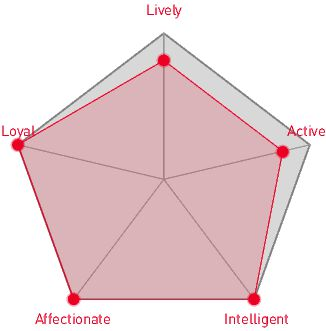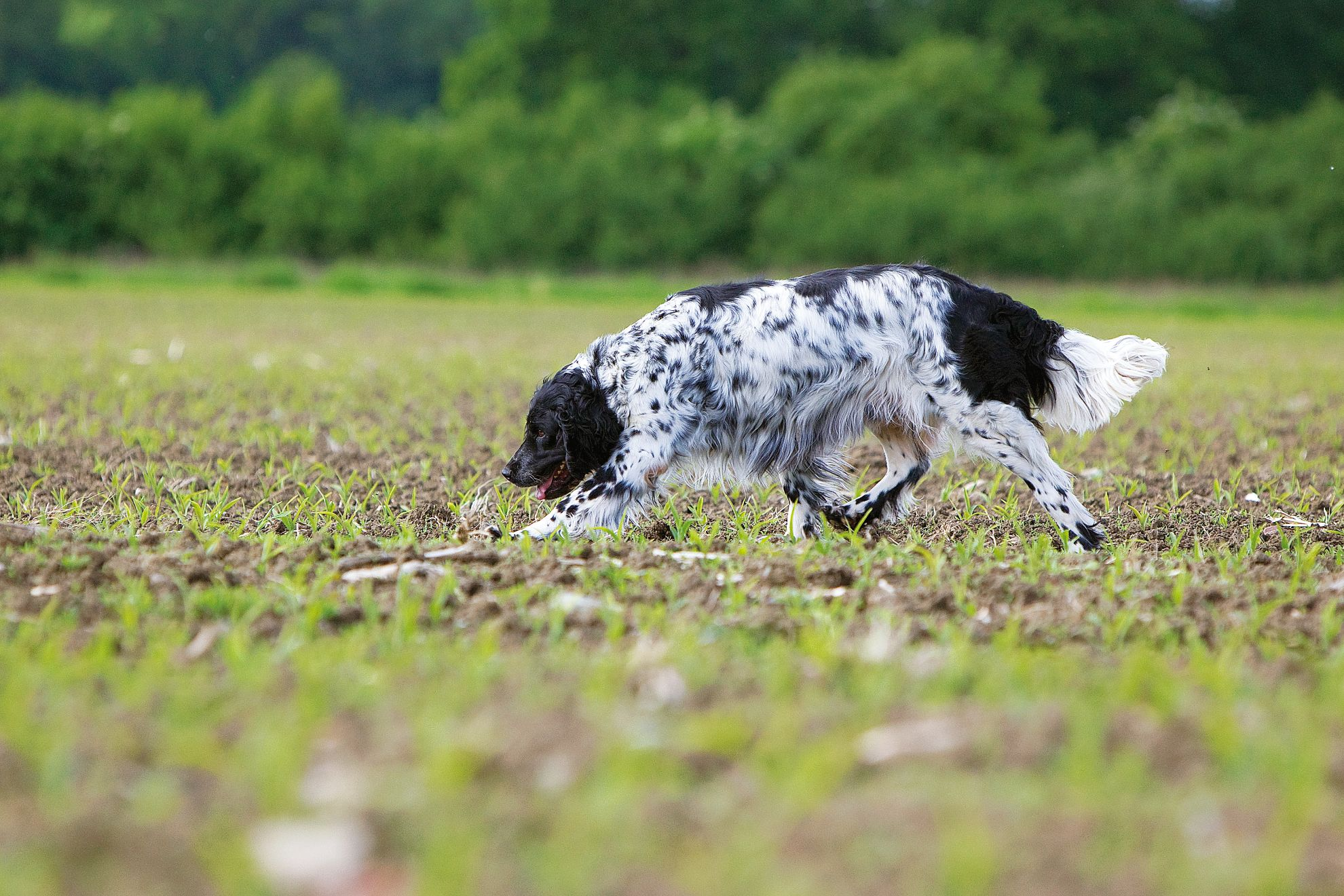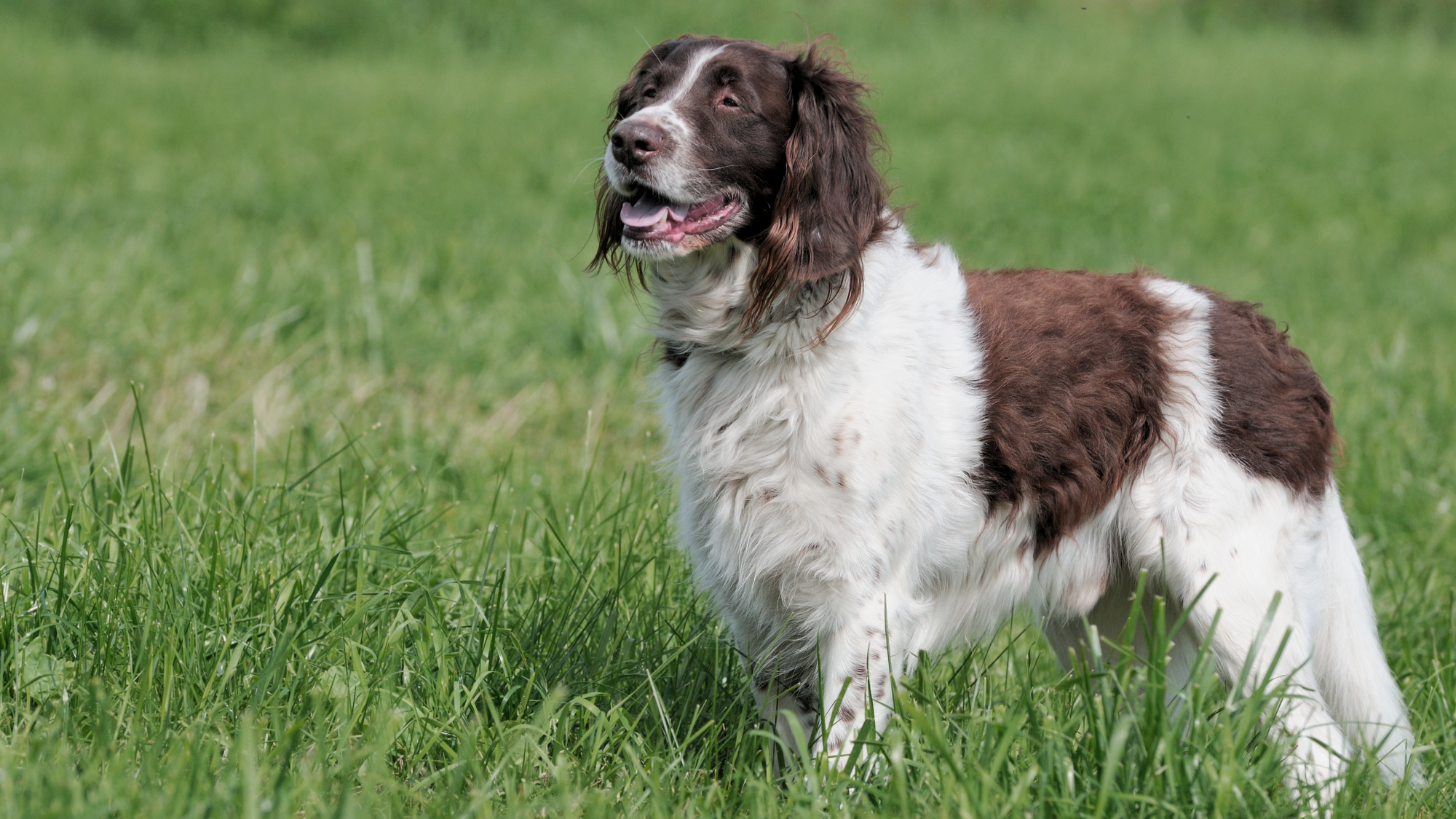
Let's talk Large Münsterländers
With their dignified expression, athletic build, and even-keeled temperament, the Large Münsterländer appears to have the makings of a great canine. Appearances aren’t deceiving for this breed: They’re hugely reliable and steadfast, a gundog traditionally bred to do the job of retrieving. Most content when at work, the Large Münsterländer breed makes for a sensational companion and a top-notch family dog as well.Official name: Large Münsterländer
Other names: Great Münsterländer, Great Münster Spaniel, Vorstehhund
Origins: Germany

| Drooling tendencies: |
|
Warm weather? | |
| Shedding level: | Suited to apartment living? | ||
| Physical activity needs (high, low, medium): | Low to moderate | Kid-friendly? |
 |
| Compatibility with other pets: |  |
Can stay alone? | 
|
We advise against leaving pets alone for long stretches.
Companionship can prevent emotional distress and destructive behaviour.
Speak to your veterinarian for recommendations.


| Baby age | Birth to 2 months |
| Puppy age | 2 to 15 months |
| Adult age | 15 months to 5 years |
| Mature age | 5 to 8 years |
| Senior age | from 8 years |

1/7
Get to know the Large Münsterländer
All you need to know about the breed
A German original, the Large Münsterländer was celebrated throughout their native land for their skill in the field and quickly became a tried-and-true gundog. They possess an elegant gait that has carried them through their originally assigned task as a pointer, pursuer, and retriever.
The Large Münsterländer is now becoming increasingly popular outside of their country of origin, highly valued more in England and Canada. Their abilities as a tireless and fearless breed make them a fabulous family pet as well.
The Large Münsterländer is instantly recognisable for their hallmark colouring, an exclusively white body covered by black patches and black flecks or ticks. Their noble expression and very calm manner are another huge draw of this docile breed.
A country setting rather than an urban one is best for the Large Münsterländer dog. Given this sporting background too, those interested in owning the breed should be ready to get up and go. As a nonstop dog who is most content while in motion, the Large Münsterländer is really best for active owners only and those who enjoy the great outdoors as much as they do.

2/7
2 facts about Large Münsterländers
1. Energy to burn
As a field sport dog, the Large Münsterländer has years of chasing in their background, which has resulted in a dog with endless energy. They have been known to chase for miles on end without tiring, with a constitution so robust that the Large Münsterländer also doesn’t require a lot of sleep. Needless to say, this is a dog for active owners only!
2. Rarest among us
Developed only at the turn of the 20th century, the Large Münsterländer is a relatively rare breed who is known for the most part in their native Germany. The breed however is becoming more recognised outside of their homeland and has been valued in England, Germany, and Canada for their prowess both in the field and in water as a retrieving breed.
History of the breed
One of the canine kingdom’s more recent breeds, the Large Münsterländer’s heritage can be traced back only to 1900 when they were developed in Münster, Germany after their smaller cousin, and now totally separate breed, the factually named Smaller Münsterlander. Breeders sought in the new breed to create a more vigorous bird hunting dog.
The breed developed from the same roots as the German Long-Haired Pointer but took on a separate status after their black-and-white coat emerged during selective breeding. The German Long-Haired Pointer has a strictly liver-and-white colouring so the German Long-Haired Pointer Club refused to recognise the Large Münsterländer’s different mix.
The breed came into its own with the founding of the Large Münsterländer Club in 1919 and was then recognised by The Kennel Club in 1971.

4/7
From head to tail
Physical characteristics of Large Münsterländers
1. Ears
Ears set high, broad at base, tapering to tips.
2. Body
Strong, agile body with broad, deep chest.
3. Coat
Long, flat, and dense coat, close-lying, fringed in areas, hallmark black and white colouration.

5/7
Things to look out for
From specific breed traits to a general health overview, here are some interesting facts about your Large Münsterländer

6/7
Caring for your Large Münsterländer
Grooming, training and exercise tips
The Large Münsterländer is a rugged dog who has a long history of being in the field, where dirt and debris reign. Grooming your Large Münsterländer should happen in the way of weekly brushing as well as checking their nail pads for anything picked up while outside. Bathe them only as needed but clean and dry their ears regularly, trim their nails, and brush teeth often to avoid periodontal disease. As a traditional sport dog and one conditioned to being outside, the Large Münsterländer requires daily exercise. This is a dog who needs to run and roam. They’re high-energy and benefit most from days filled with lots of activity (runners welcome). That can happen in a less-rural setting but owners should be cognisant of the dog’s need for speed. Easy going as far as their temperament is concerned, the Large Münsterländer takes well to training. Loyalty, intelligence, and affability mark this breed so listening, and following direction, are simple tasks for the Large Münsterländer.7/7
All about Large Münsterländers
You’re not imagining things: The two do have much in common - in fact, the same origin. The Large Münsterländer is actually an offshoot of the German Long-Haired Pointer and took on a separate status when the German Long-Haired Pointer Club denied recognition due to the Large Münsterländer breed’s black and white colouration, which diverged from the liver and white colouration of the former.
With their steady manner and upbeat outlook, the Large Münsterländer makes a marvelous family dog, and is especially affectionate with children, once trained of course, even younger ones. It’s best though not to leave them alone with wee ones, as their energy may end in someone taking a tumble accidentally. Highly obedient and intelligent, they are easily trained to behave well.
translations.feature.breeds.otherbreeds
Read more on this topic

How your dog's nutrition needs change with age

How to adopt a dog

Things to consider before getting a dog
Sources
1 - Veterinary Centers of America https://vcahospitals.com/
2 - Royal Canin Dog Encyclopaedia. Ed 2010 and 2020
3 - Banfield Pet Hospital https://www.banfield.com/
4 - Royal Canin BHN Product Book
5 - American Kennel Club https://www.akc.org/


